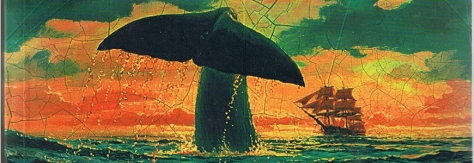By Dan Stout
An episodic blockbuster implores critique at two levels: the celebration that includes boundless audience, public rituals (e.g., costumes, merchandise, enduring memes such as “May the Force be with you,”), and the film itself, which must be considered within a context of a global event. Moviegoers, then, experience Star Wars as both story and spectacle, and a review inevitably analyzes points where the two converge and disconnect. Speaking of the former, the magic of the first film is not recaptured despite sporadic flashes of brilliance and a creative synthesis of digital image and the warmth of 35m film to create worlds yet unseen.
Neither event nor story can be assessed without attention to Walt Disney Studios Motion Pictures’ investment of $300 billion in the Star Wars franchise beginning with this seventh episode directed by J. J. Abrams. With a trilogy in the making, plus sequels, prequels, spin-offs, merchandise galore and even a possible dramatic TV series, The Force Awakens is the leap from original storyline to whatever the future brings. That bridge was competently accomplished with old and new characters as well as touch points to previous films, thus extending that ever-expanding fabric of the world’s most satisfying sci-fi tale to a global following.
As media event, Star Wars accedes to the level of civil religion. Like holy and patriotic holidays, the movie’s opening day is a global celebration of the Force, the lightside-darkside clash, and hope in the future. A Star Wars Catholic mass was held in Berlin; parishioners donned costumes and priests waved lightsabers to illustrate Biblical tenets. A film clip was played during the service.

A baby born opening day was named “Ryker Jedi” in Texas. Perhaps Star Wars screenings will stand alongside the Fourth of July and Thanksgiving in terms of collective reminders and expressions of core values. When we sit in the theater, we stand together, I mean sit together in support of redemption, parenthood, and commitment to follow the light. “The Force” is deity, and how could LDS audience members resist a salute to truth, justice, and the moral way?
Link: Why Mormons Love Star Wars (Washington Post)
Star Wars turns out to be the strongest civil religion event emanating from a movie series. Schindler’s List, perhaps the most moral movie ever made, and To Kill A Mockingbird a plea for civil rights, are historically influential, but do not have the enduring top-of-mind awareness that a movie franchise like Star Wars is set to deliver for decades to come.
***Spoiler Alert***
As for the film itself, The Force Awakens is uneven, with a conventional plot and flat characters. The dialogue has a dated feel. Finn (John Boyega), Storm trooper for the First Order, defects to help Rey (Daisy Ridley) and Poe Dameron (Oscar Isaac) pilot for the Resistance seeking eventual elimination of the Dark Side. Poe conceals a map inside a droid revealing the location of Luke Skywalker (Mark Hamill), the last remaining Jedi that villainous First Order leader seeks to destroy. Quirky is the contrast of pending doom with the cute dome-headed droid that rolls on a ball stopping to get adoring pats on the head. Antagonist and Supreme Leader Snoke (Andy Serkis) relentlessly pursues Skywalker despite Hans Solo (Harrison Ford) and Princess Leia’s (Carrie Fisher) return to the story. The surprise ending will a stunner for some — and a yawner for others.

The movie is best enjoyed as a stroll through a futuristic world with oddities at every turn. Put on your anthropologist hat and survey the terrain. The rusting space ships as the dessert slowly absorbs them back into nature is a magnificent piece of film work in copious shades of browns and yellows evoking the deterioration photography of Julian Kilker that comments on the ultimate demise of technology. Continuing our walk, we see plenty of droids, but none advanced from the early films. Abrams nor Lucas have done their homework on artificial intelligence. Today’s robots are more advanced.
Abrams reprises several scenes such as the Mod Eisley Cantina full of kooky creatures and Maz Kanata who reads the eyes of several characters. “You have eyes that want to run,” she tells Finn disclosing his vacillating commitment, and in terms of the Force, she proclaims, “Truth can only be found looking forward, not behind.” The markets depict ancient economies and currency exchange is inconsistent with other technological advances, especially weaponry and aircraft. Speaking of weaponry, The Force Awakens could easily be an infomercial for the NRA. And, the TIE fighter jets are back zooming everywhere. Zooming too much in fact. Zoom. Zoom.
Link: Utahns are the biggest Star Wars fans (Washington Post)
Perhaps the most compelling scene depicts “terrorism,” when storm troopers massacre a group of the Resistance at Snoke’s order, “Kill all of them,” he commands. Will terrorism endure this far into the future? Abrams seems to suggest so, although this question is barely teased out, and if more fully developed, the idea could have added relevancy to the conflicts depicted.
Audience members love the droids and wax nostalgic for C-3PO and R2-D2 who make cameo appearances. Mild applause ensued where I watched the film, with comments like “Look, there’s C-3PO!” heard throughout the theater. Lastly, John Williams music score displays an uncanny ability to sync action and emotion, deserving highest accolades.
In sum, Star Wars reminds me of my trips to Jersey Shore amusement parks as a kid. The events themselves engaged all my senses, and in a holistic way were unforgettable. The individual attractions, though, have fallen from memory. Was there a roller coaster? The Force Awakens is much the same. It’s the holiday and what it represents that has staying power, not the film itself.
Your thoughts?












